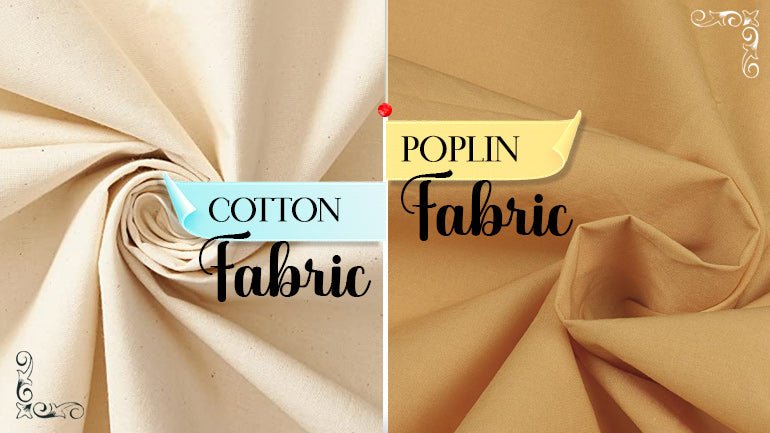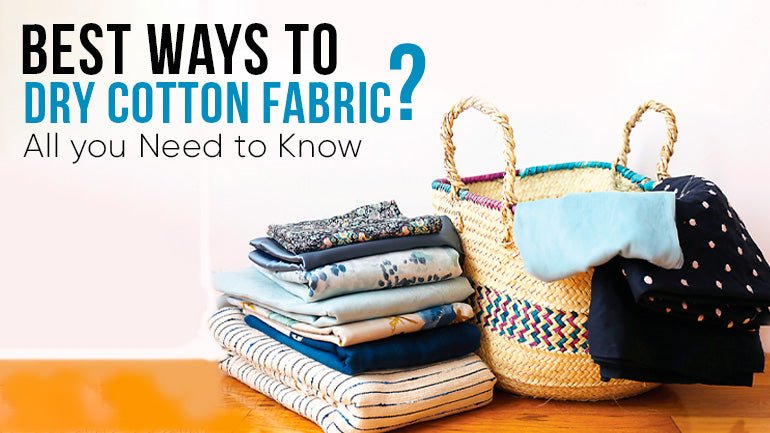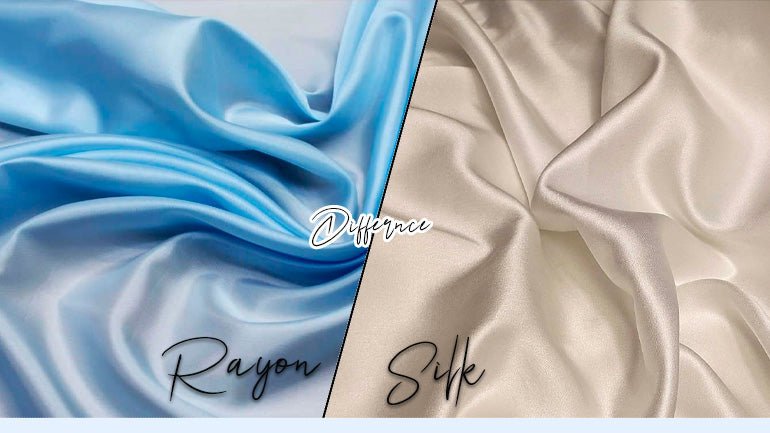Cotton and poplin, both derived from the versatile cotton plant, are two fabrics that have their unique characteristics and applications.
These fabrics have been used for centuries, and they continue to play a significant role in the fashion and textile industries today. While both cotton and poplin share some similarities, such as their natural fiber composition, they also exhibit distinct differences in terms of texture, weave, and ideal uses.
When it comes to choosing the perfect fabric for your clothing or home textiles, the debate between cotton and poplin often arises. These two materials share a close relationship, but they are not one and the same. The questions that frequently arise: Is poplin the same as 100% cotton? Or does Poplin feel like cotton?
Key Differences Between Cotton and Poplin
If you're a fashion lover, a designer, or simply someone looking for comfortable and versatile clothing options, understanding the distinctions between cotton and poplin is essential in making the right choice for your next project or purchase.
Cotton Fabric
Cotton is a remarkable natural fiber sourced from the seeds of the cotton plant. It boasts several noteworthy attributes that make it a popular choice in the world of textiles.
Cotton is popular for its natural fiber, grown and harvested from plants. This quality renders it an eco-friendly and sustainable choice, aligning with the increasing emphasis on environmental consciousness in the textile industry.
One of the most lauded features of cotton is its inherent softness. This luxurious feel against the skin contributes to its widespread use in clothing and bedding, where comfort is paramount.
Cotton's exceptional breathability is a boon in hot and humid climates. This quality allows it to keep wearers cool and comfortable, making it a favored fabric for summer wear.
Cotton is not just about comfort; it's also incredibly durable. Its robust nature enables it to withstand the rigors of everyday wear and tear. This durability makes it an ideal choice for clothing meant for frequent use, such as jeans and T-shirts.
Common Uses for Cotton Fabric:
Clothing
Cotton can be used for a wide array of clothing items, including tops, bottoms, dresses, and underwear. Its softness and breathability make it a top pick for garments that prioritize comfort.
Bedding
Cotton's soft and breathable qualities extend to the bedroom, where it is a staple in sheets, pillowcases, and blankets. A night's rest on cotton bedding is synonymous with comfort.
Towels
The absorbent nature of cotton makes it the preferred fabric for towels, ensuring efficient drying and longevity.
Other Applications
Beyond apparel and bedding, cotton finds its way into numerous other products, such as flags, bags, and upholstery, thanks to its versatility and sustainability.
Poplin Fabric:
Poplin, on the other hand, is a specific type of fabric crafted entirely from 100% cotton. It stands out with its unique characteristics that set it apart from conventional cotton fabrics.
Poplin Fabric is renowned for its lightweight nature, which makes it an excellent choice for summer clothing. The fabric's ability to keep wearers cool and comfortable is highly valued during warm weather.
Poplin boasts a smooth surface with a subtle, glossy finish. This feature gives it a more formal and polished appearance compared to traditional cotton fabrics.
Poplin's tightly woven structure, characterized by a high thread count, contributes to its increased durability and resistance to fraying. This robustness allows it to maintain its integrity through extended use.
Common Uses for Poplin Fabric:
Summer Dresses
Poplin is frequently employed in the creation of summer dresses and other lightweight clothing items due to its breathability and smooth, elegant finish.
Blouses and Tops
The lightweight and formal appearance of poplin makes it a popular choice for blouses and tops where a more polished look is desired.
Quilting
While not as durable as some other cotton fabrics, poplin can still be used for quilting projects. Its lightweight nature adds a unique touch to quilts, making them suitable for warmer climates.
Additional Applications
Poplin fabric is also utilized as a lining for jackets and skirts, as well as a base fabric for various crafts and home decor projects. Its versatility extends beyond the realm of fashion.
Comparison of Cotton and Poplin Fabrics
- Origin
Cotton: Cotton, a natural fiber, has been cultivated and used for textile production for thousands of years. Its origins can be traced back to the Indus Valley Civilization in modern-day Pakistan and India, making it one of the oldest and most widely used fabrics globally.
Poplin: Poplin, on the other hand, has a more recent history. It was originally made from silk in the 15th century in the Papal city of Avignon, France. Over time, the term "poplin" has evolved to encompass a range of materials, including cotton, polyester, and a cotton-polyester blend.
- Manufacturing Process
Cotton: Cotton fabric is made from the natural fibers of the cotton plant. After harvesting, the cotton bolls are ginned to remove seeds and then carded to align the fibers. These fibers are spun into yarn, which is then woven or knit to create the fabric.
Poplin: Poplin can be made from various materials, but the most common is cotton. It is woven using a plain weave technique, which involves passing one weft yarn over and under one warp yarn alternately. This results in a tight, closely woven fabric with a smooth surface.
- Appearance
Cotton: Cotton fabric has a natural, matte appearance. It can be found in a wide range of colors and patterns, making it versatile for various clothing styles.
Poplin: Poplin is characterized by its distinct ribbed texture, which results from the plain weave. This texture gives it a slightly shiny and crisp appearance, making it suitable for dressier attire.
- Texture
Cotton: Cotton fabric has a soft and smooth texture. It is known for its comfort against the skin, making it a popular choice for everyday wear.
Poplin: Poplin has a crisper and more structured texture due to its tight weave. This texture adds a level of formality to clothing items made from poplin.
- Draping
Cotton: Cotton fabric drapes well, but it has a more relaxed drape compared to poplin. It is commonly used for casual and comfortable clothing.
Poplin: Poplin has a stiffer drape due to its tight weave, which gives clothing a more tailored and polished appearance. It is often used for formal and business attire.
- Breathability
Cotton: Cotton is highly breathable, allowing air to circulate and moisture to evaporate from the skin. It is an excellent choice for hot and humid climates.
Poplin: While poplin is breathable, it may not be as breathable as pure cotton due to its tighter weave. However, it is still suitable for warmer weather.
- Affordability
Cotton: Cotton is generally more affordable compared to poplin. Its availability and versatility contribute to its cost-effectiveness.
Poplin: Poplin, especially high-quality poplin made from natural fibers, can be more expensive than cotton. The cost may vary depending on the blend and brand.
- Care
Cotton: Cotton is relatively easy to care for. It can be machine-washed and dried, and it becomes softer with each wash. However, some cotton garments may be prone to wrinkling.
Also read Does Cotton Shrink in Dryer.
Poplin: Poplin often requires more careful handling. It may wrinkle easily, and some poplin garments may require ironing to maintain their crisp appearance.
- Moisture-Wicking Properties
Cotton: Cotton has good moisture-wicking properties, which means it can absorb and release moisture effectively. This makes it a comfortable choice for everyday wear, including activewear.
Poplin: Poplin also has moisture-wicking properties but may not be as effective as cotton in this regard due to its tighter weave.
- Temperature Regulation
Cotton: Cotton fabric is known for its excellent temperature regulation properties. It keeps you cool in hot weather by allowing moisture to evaporate and provides insulation in colder temperatures.
Poplin: Poplin offers decent temperature regulation, but it may not be as versatile as cotton in extreme conditions. It is better suited for temperate climates.
- Comfort
Cotton: Cotton is renowned for its comfort. It feels soft against the skin and is often used for loungewear, underwear, and casual clothing.
Poplin: Poplin can be comfortable, especially in dress shirts and blouses. However, its crisper texture may feel less comfortable for some individuals compared to the softness of cotton.
- Durability
Cotton: Cotton is a durable fabric known for its longevity when cared for properly. It can withstand regular washing and wear, making it a reliable choice for everyday clothing.
Poplin: Poplin, particularly when made from high-quality materials, is also durable. Its tight weave contributes to its resistance to wear and tear.
- Cost
Cotton: Cotton is generally more affordable than poplin, making it an accessible choice for various budgets.
Poplin: Poplin, especially if made from premium materials or used in high-end fashion, can be more expensive than cotton. The cost varies depending on the brand and blend of materials.
Advantages and Disadvantages: Cotton vs Poplin
Advantages of Cotton:
Cotton is renowned for its numerous advantages, making it a beloved choice for various clothing and textile applications. Here are some of the key advantages of cotton:
Lightweight and Breathable
Cotton is a natural, lightweight fabric that is exceptionally breathable. It allows air to circulate freely, making it an ideal choice for warm-weather clothing. The breathability of cotton helps in keeping the body cool and comfortable.
Hypoallergenic
Cotton is hypoallergenic, making it suitable for individuals with sensitive skin or allergies. It is unlikely to cause skin irritation or allergic reactions, making it a safe option for people of all skin types.
Comfortable to Wear
Cotton fabric is soft and comfortable against the skin. It is gentle, which makes it a popular choice for undergarments, t-shirts, and casual wear.
Durability
Cotton is a durable fabric that can withstand multiple cycles of washing without losing its shape or color. It is known for its longevity, making it a sustainable choice.
Disadvantages of Cotton:
While cotton offers numerous advantages, it also comes with its share of disadvantages:
Wrinkle-Prone
Cotton is not inherently wrinkle-resistant. Clothing made from cotton may require ironing or steaming to maintain a neat and polished appearance. This can be a drawback for those seeking low-maintenance garments.
Shrinkage and Stretching
Cotton fabrics may shrink or stretch when exposed to moisture, either during washing or drying. This can result in alterations in the fit of clothing over time.
Comparison table: Cotton vs Poplin Fabrics
|
Feature |
Cotton |
Poplin |
|
1. Origin |
Cultivated for thousands of years |
Originated in 15th-century France (silk) |
|
2. Manufacturing Process |
Natural fibers from cotton plant |
Typically made from cotton with plain weave |
|
3. Appearance |
Natural, matte finish |
Ribbed texture, slightly shiny and crisp |
|
4. Texture |
Soft and smooth |
Crisper and more structured |
|
5. Draping |
Relaxed drape |
Stiffer drape for a tailored appearance |
|
6. Breathability |
Highly breathable |
Breathable but may be less so due to weave |
|
7. Affordability |
Generally more affordable |
Can be more expensive, depending on quality |
|
8. Care |
Easy care, softens with each wash |
May wrinkle easily, may require ironing |
|
9. Moisture-Wicking |
Good moisture-wicking properties |
Moisture-wicking but less effective |
|
10. Temperature Regulation |
Excellent temperature regulation |
Offers decent regulation, better in temperate |
|
11. Comfort |
Renowned for comfort |
Comfortable but crisper texture |
|
12. Durability |
Durable with proper care |
Durable, especially high-quality poplin |
|
13. Cost |
Generally more affordable |
Can be more expensive, depending on quality |



